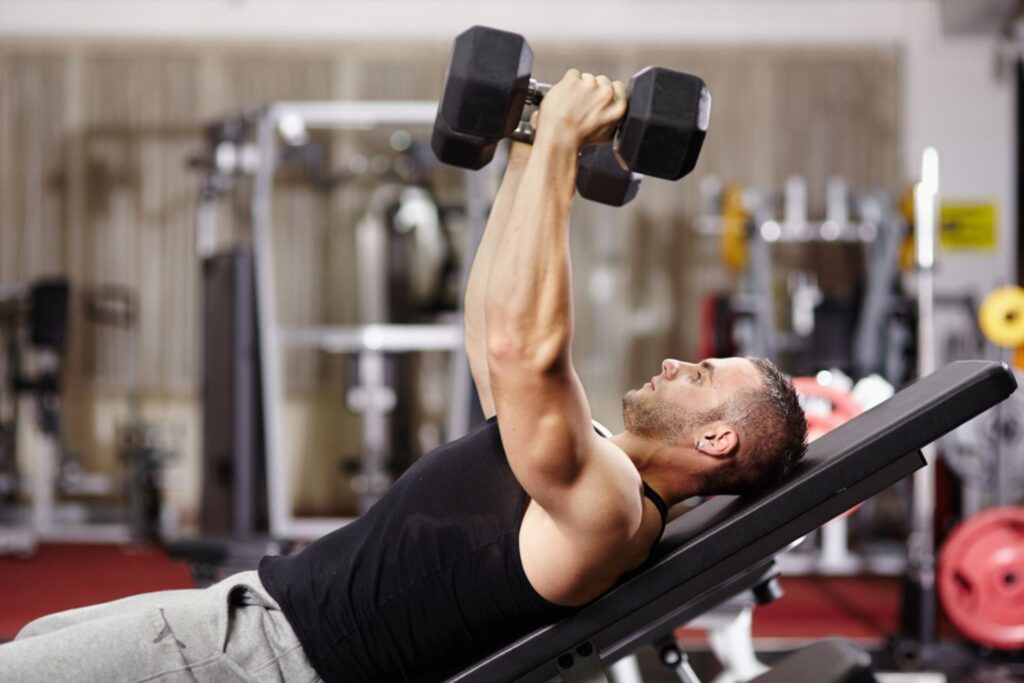WITH THE CURRENT run club craze starting to look more like an enduring trend than a passing fad, it’s time to start taking your running more seriously. As a runner, there’s a natural tendency to place more importance on actual runs than other forms of training. Kilometres logged and splits shortened may be the most common measurements of progress, but progress in the gym can be as good an indicator as any. If you want to become a better runner (and reduce your risk of injury) neglecting strength training isn’t the way to do it.
From the obvious (stronger legs do make for a stronger runner, duh) to the more obscure (upper body strength can massively boost your running power), there are myriad benefits for runners to be found in strength training. Not every exercise will have direct benefits though, and some are best left in the realm of powerlifters and bodybuilders. To help you decipher what works and what won’t, here’s ten essential strength exercises tailored specifically for runners, that will improve your endurance, power, stride and efficiency.
1. Squats

Benefit: Strengthening just about every muscle in the body will improve your running. But as you might suspect, the lower body does take priority, and most of this list reflects that, starting with squats. Squats are an all-around lower-body burner, targeting the quads, hamstrings, glutes and lower back. By strengthening these muscles, you’ll improve your lower body stability, which is crucial for maintaining proper running form and preventing injuries.
How to do it: Stand with your feet shoulder-width apart, lower your body by bending your knees and pushing your hips back as if sitting into a chair. Keep your chest upright and your knees aligned with your toes. Lower until your thighs are parallel to the ground, then push through your heels to return to the starting position.
2. Lunges
Benefit: Like squats, lunges strengthen the lower body. Specifically targeting quads, hamstrings and glutes, but with a stronger emphasis on calves. Sure, running will naturally give you some pretty toned calves – you can stop reading here if aesthetics is all you’re looking for – but strengthening them in the gym can add another weapon to your repertoire, improving balance and coordination and providing a more efficient running gait.
How to do it: Start standing with your feet together. Take a step forward with one foot and lower your body until both knees are bent at a 90-degree angle. Ensure your front knee is aligned with your ankle and your back knee hovers just above the ground. Push through your front heel to return to the starting position and repeat on the other side. For an added challenge, take a dumbbell in each hand and really feel the burn on your way back up.
3. Deadlifts

Benefit: Deadlifts primarily target the hamstrings, glutes, and lower back, promoting strength and stability in the posterior chain, which is essential for generating power and propulsion while running.
How to do it: Stand with your feet hip-width apart, holding a barbell or dumbbells in front of your thighs with an overhand grip. Keeping your back straight and chest up, hinge at the hips, lowering the weight towards the ground while maintaining a slight bend in your knees. Once you feel a stretch in your hamstrings, reverse the movement by driving through your heels and squeezing your glutes to return to the starting position.
4. Planks
Benefit: Like we said, running draws on more muscles than just your legs. Core muscles are engaged just as often as their lower body counterparts while running, and planks are a surefire way to add core strength. A few minutes of planking per day will tone up your abs, obliques and lower back, improving overall stability and preventing excessive rotation or sway while running.
How to do it: Start in a push-up position with your hands directly beneath your shoulders and your body forming a straight line from head to heels. Engage your core muscles and hold this position, ensuring your hips don’t sag or rise too high. Aim to maintain the plank for 30 seconds to one minute, gradually increasing the duration as you build strength.
5. Push-ups

Benefits: Upper body strength might not be the primary focus for runners, but the upper body does contribute to running efficiency. Arm swing assists with balance, momentum, and forward propulsion, while strong chest and shoulder muscles help maintain stability and prevent excess movement that wastes energy and slows you down. And as we’ve already mentioned, a strong core also has its benefits. How better to improve those areas than by frequently engaging in an exercise that targets all of them?
How to do it: You probably know how to do a push-up, but in case you’re not sure of how to perfect your form, here’s the basics. Start in a plank position with hands slightly wider than shoulder-width apart, lower your body by bending your elbows, then push through your palms to return to the starting position.
6. Calf raises
Benefit: Again, calf strength is essential for optimal running. But calf raises don’t only target the calf muscles, they also strengthen the ankles and can improve explosiveness (known to runners as push-off power).
How to do it: Stand with your feet hip-width apart, lifting your heels off the ground as high as possible while balancing on the balls of your feet. Hold for a moment at the top, then lower your heels back down below the level of your toes. For an added challenge, perform calf raises on a step or platform, allowing your heels to drop below the level of your toes for a deeper stretch.
7. Dumbbell rows
Benefit: To balance out all that strength you’re doubtlessly building on the front half of your upper body, back strength is also necessary. Dumbbell rows strengthen the upper back, but they also work the shoulders and arms, enhancing running posture during running through a balanced upper body.
How to do it: Stand with your feet hip-width apart, holding a dumbbell in one hand. Keeping your back straight, hinge at the hips, and pull the dumbbell towards your hip, squeezing your shoulder blades together, then lower the weight back down with control.
8. Russian twists

Benefit: Another core strengthener, Russian twists target the obliques and abs, improving rotational stability and enhancing overall running efficiency.
How to do it: Sit on the ground with your knees bent and feet elevated, leaning back slightly to engage your core. Hold a weight or medicine ball with both hands, and twist your torso to the right, bringing the weight towards the ground beside your hip. Reverse the movement to the left, twisting through your core muscles. Continue alternating sides in a controlled motion.
9. Supermans/back extensions
Benefit: Supermans, or whatever naming variation you know them by, strengthen the lower back, glutes, and hamstrings, helping to prevent lower back pain and injury, while improving running posture.
How to do it: Lie face down on the ground with your arms extended overhead and legs straight. Engage your core muscles, glutes, and lower back to lift your chest, arms, and legs off the ground simultaneously, forming a slight arch in your back. Hold for a moment at the top, then lower back down with control.
10. Single-leg deadlifts
Benefit: Single-leg deadlifts improve balance, stability, and proprioception – your body’s ability to sense its own movement, in layman’s terms – while targeting the hamstrings, glutes and lower back, making them an excellent functional exercise for runners.
How to do it: Stand on one leg with a slight bend in the knee, holding a dumbbell or kettlebell in one hand. Hinge at the hips, extending your free leg behind you and lowering the weight towards the ground while keeping your back straight and chest up. Once you feel a stretch in your hamstrings, reverse the movement to return to the starting position, maintaining balance throughout the exercise. Repeat on the other leg.
Related:













